Sequencing by Synthesis
Ion Semiconductor Sequencing
Single-Molecule Real-Time Sequencing
Nanopore Sequencing
Other Technologies
Reagents
Instruments
Software
Services
Diagnostics
Research
Personalized Medicine
Agrigenomics
Academic Institutes
Pharmaceutical Companies
Biotechnology Companies
Hospitals and Clinics
North America
Europe
South America
Asia Pacific
Middle East and Africa
North America Outlook (USD Billion, 2019-2035)
North America Next Generation Sequencing Market by Technology Type
Sequencing by Synthesis
Ion Semiconductor Sequencing
Single-Molecule Real-Time Sequencing
Nanopore Sequencing
Other Technologies
North America Next Generation Sequencing Market by Product Type
Reagents
Instruments
Software
Services
North America Next Generation Sequencing Market by Application Type
Diagnostics
Research
Personalized Medicine
Agrigenomics
North America Next Generation Sequencing Market by End Use Type
Academic Institutes
Pharmaceutical Companies
Biotechnology Companies
Hospitals and Clinics
North America Next Generation Sequencing Market by Regional Type
US
Canada
US Outlook (USD Billion, 2019-2035)
US Next Generation Sequencing Market by Technology Type
Sequencing by Synthesis
Ion Semiconductor Sequencing
Single-Molecule Real-Time Sequencing
Nanopore Sequencing
Other Technologies
US Next Generation Sequencing Market by Product Type
Reagents
Instruments
Software
Services
US Next Generation Sequencing Market by Application Type
Diagnostics
Research
Personalized Medicine
Agrigenomics
US Next Generation Sequencing Market by End Use Type
Academic Institutes
Pharmaceutical Companies
Biotechnology Companies
Hospitals and Clinics
CANADA Outlook (USD Billion, 2019-2035)
CANADA Next Generation Sequencing Market by Technology Type
Sequencing by Synthesis
Ion Semiconductor Sequencing
Single-Molecule Real-Time Sequencing
Nanopore Sequencing
Other Technologies
CANADA Next Generation Sequencing Market by Product Type
Reagents
Instruments
Software
Services
CANADA Next Generation Sequencing Market by Application Type
Diagnostics
Research
Personalized Medicine
Agrigenomics
CANADA Next Generation Sequencing Market by End Use Type
Academic Institutes
Pharmaceutical Companies
Biotechnology Companies
Hospitals and Clinics
Europe Outlook (USD Billion, 2019-2035)
Europe Next Generation Sequencing Market by Technology Type
Sequencing by Synthesis
Ion Semiconductor Sequencing
Single-Molecule Real-Time Sequencing
Nanopore Sequencing
Other Technologies
Europe Next Generation Sequencing Market by Product Type
Reagents
Instruments
Software
Services
Europe Next Generation Sequencing Market by Application Type
Diagnostics
Research
Personalized Medicine
Agrigenomics
Europe Next Generation Sequencing Market by End Use Type
Academic Institutes
Pharmaceutical Companies
Biotechnology Companies
Hospitals and Clinics
Europe Next Generation Sequencing Market by Regional Type
Germany
UK
France
Russia
Italy
Spain
Rest of Europe
GERMANY Outlook (USD Billion, 2019-2035)
GERMANY Next Generation Sequencing Market by Technology Type
Sequencing by Synthesis
Ion Semiconductor Sequencing
Single-Molecule Real-Time Sequencing
Nanopore Sequencing
Other Technologies
GERMANY Next Generation Sequencing Market by Product Type
Reagents
Instruments
Software
Services
GERMANY Next Generation Sequencing Market by Application Type
Diagnostics
Research
Personalized Medicine
Agrigenomics
GERMANY Next Generation Sequencing Market by End Use Type
Academic Institutes
Pharmaceutical Companies
Biotechnology Companies
Hospitals and Clinics
UK Outlook (USD Billion, 2019-2035)
UK Next Generation Sequencing Market by Technology Type
Sequencing by Synthesis
Ion Semiconductor Sequencing
Single-Molecule Real-Time Sequencing
Nanopore Sequencing
Other Technologies
UK Next Generation Sequencing Market by Product Type
Reagents
Instruments
Software
Services
UK Next Generation Sequencing Market by Application Type
Diagnostics
Research
Personalized Medicine
Agrigenomics
UK Next Generation Sequencing Market by End Use Type
Academic Institutes
Pharmaceutical Companies
Biotechnology Companies
Hospitals and Clinics
FRANCE Outlook (USD Billion, 2019-2035)
FRANCE Next Generation Sequencing Market by Technology Type
Sequencing by Synthesis
Ion Semiconductor Sequencing
Single-Molecule Real-Time Sequencing
Nanopore Sequencing
Other Technologies
FRANCE Next Generation Sequencing Market by Product Type
Reagents
Instruments
Software
Services
FRANCE Next Generation Sequencing Market by Application Type
Diagnostics
Research
Personalized Medicine
Agrigenomics
FRANCE Next Generation Sequencing Market by End Use Type
Academic Institutes
Pharmaceutical Companies
Biotechnology Companies
Hospitals and Clinics
RUSSIA Outlook (USD Billion, 2019-2035)
RUSSIA Next Generation Sequencing Market by Technology Type
Sequencing by Synthesis
Ion Semiconductor Sequencing
Single-Molecule Real-Time Sequencing
Nanopore Sequencing
Other Technologies
RUSSIA Next Generation Sequencing Market by Product Type
Reagents
Instruments
Software
Services
RUSSIA Next Generation Sequencing Market by Application Type
Diagnostics
Research
Personalized Medicine
Agrigenomics
RUSSIA Next Generation Sequencing Market by End Use Type
Academic Institutes
Pharmaceutical Companies
Biotechnology Companies
Hospitals and Clinics
ITALY Outlook (USD Billion, 2019-2035)
ITALY Next Generation Sequencing Market by Technology Type
Sequencing by Synthesis
Ion Semiconductor Sequencing
Single-Molecule Real-Time Sequencing
Nanopore Sequencing
Other Technologies
ITALY Next Generation Sequencing Market by Product Type
Reagents
Instruments
Software
Services
ITALY Next Generation Sequencing Market by Application Type
Diagnostics
Research
Personalized Medicine
Agrigenomics
ITALY Next Generation Sequencing Market by End Use Type
Academic Institutes
Pharmaceutical Companies
Biotechnology Companies
Hospitals and Clinics
SPAIN Outlook (USD Billion, 2019-2035)
SPAIN Next Generation Sequencing Market by Technology Type
Sequencing by Synthesis
Ion Semiconductor Sequencing
Single-Molecule Real-Time Sequencing
Nanopore Sequencing
Other Technologies
SPAIN Next Generation Sequencing Market by Product Type
Reagents
Instruments
Software
Services
SPAIN Next Generation Sequencing Market by Application Type
Diagnostics
Research
Personalized Medicine
Agrigenomics
SPAIN Next Generation Sequencing Market by End Use Type
Academic Institutes
Pharmaceutical Companies
Biotechnology Companies
Hospitals and Clinics
REST OF EUROPE Outlook (USD Billion, 2019-2035)
REST OF EUROPE Next Generation Sequencing Market by Technology Type
Sequencing by Synthesis
Ion Semiconductor Sequencing
Single-Molecule Real-Time Sequencing
Nanopore Sequencing
Other Technologies
REST OF EUROPE Next Generation Sequencing Market by Product Type
Reagents
Instruments
Software
Services
REST OF EUROPE Next Generation Sequencing Market by Application Type
Diagnostics
Research
Personalized Medicine
Agrigenomics
REST OF EUROPE Next Generation Sequencing Market by End Use Type
Academic Institutes
Pharmaceutical Companies
Biotechnology Companies
Hospitals and Clinics
APAC Outlook (USD Billion, 2019-2035)
APAC Next Generation Sequencing Market by Technology Type
Sequencing by Synthesis
Ion Semiconductor Sequencing
Single-Molecule Real-Time Sequencing
Nanopore Sequencing
Other Technologies
APAC Next Generation Sequencing Market by Product Type
Reagents
Instruments
Software
Services
APAC Next Generation Sequencing Market by Application Type
Diagnostics
Research
Personalized Medicine
Agrigenomics
APAC Next Generation Sequencing Market by End Use Type
Academic Institutes
Pharmaceutical Companies
Biotechnology Companies
Hospitals and Clinics
APAC Next Generation Sequencing Market by Regional Type
China
India
Japan
South Korea
Malaysia
Thailand
Indonesia
Rest of APAC
CHINA Outlook (USD Billion, 2019-2035)
CHINA Next Generation Sequencing Market by Technology Type
Sequencing by Synthesis
Ion Semiconductor Sequencing
Single-Molecule Real-Time Sequencing
Nanopore Sequencing
Other Technologies
CHINA Next Generation Sequencing Market by Product Type
Reagents
Instruments
Software
Services
CHINA Next Generation Sequencing Market by Application Type
Diagnostics
Research
Personalized Medicine
Agrigenomics
CHINA Next Generation Sequencing Market by End Use Type
Academic Institutes
Pharmaceutical Companies
Biotechnology Companies
Hospitals and Clinics
INDIA Outlook (USD Billion, 2019-2035)
INDIA Next Generation Sequencing Market by Technology Type
Sequencing by Synthesis
Ion Semiconductor Sequencing
Single-Molecule Real-Time Sequencing
Nanopore Sequencing
Other Technologies
INDIA Next Generation Sequencing Market by Product Type
Reagents
Instruments
Software
Services
INDIA Next Generation Sequencing Market by Application Type
Diagnostics
Research
Personalized Medicine
Agrigenomics
INDIA Next Generation Sequencing Market by End Use Type
Academic Institutes
Pharmaceutical Companies
Biotechnology Companies
Hospitals and Clinics
JAPAN Outlook (USD Billion, 2019-2035)
JAPAN Next Generation Sequencing Market by Technology Type
Sequencing by Synthesis
Ion Semiconductor Sequencing
Single-Molecule Real-Time Sequencing
Nanopore Sequencing
Other Technologies
JAPAN Next Generation Sequencing Market by Product Type
Reagents
Instruments
Software
Services
JAPAN Next Generation Sequencing Market by Application Type
Diagnostics
Research
Personalized Medicine
Agrigenomics
JAPAN Next Generation Sequencing Market by End Use Type
Academic Institutes
Pharmaceutical Companies
Biotechnology Companies
Hospitals and Clinics
SOUTH KOREA Outlook (USD Billion, 2019-2035)
SOUTH KOREA Next Generation Sequencing Market by Technology Type
Sequencing by Synthesis
Ion Semiconductor Sequencing
Single-Molecule Real-Time Sequencing
Nanopore Sequencing
Other Technologies
SOUTH KOREA Next Generation Sequencing Market by Product Type
Reagents
Instruments
Software
Services
SOUTH KOREA Next Generation Sequencing Market by Application Type
Diagnostics
Research
Personalized Medicine
Agrigenomics
SOUTH KOREA Next Generation Sequencing Market by End Use Type
Academic Institutes
Pharmaceutical Companies
Biotechnology Companies
Hospitals and Clinics
MALAYSIA Outlook (USD Billion, 2019-2035)
MALAYSIA Next Generation Sequencing Market by Technology Type
Sequencing by Synthesis
Ion Semiconductor Sequencing
Single-Molecule Real-Time Sequencing
Nanopore Sequencing
Other Technologies
MALAYSIA Next Generation Sequencing Market by Product Type
Reagents
Instruments
Software
Services
MALAYSIA Next Generation Sequencing Market by Application Type
Diagnostics
Research
Personalized Medicine
Agrigenomics
MALAYSIA Next Generation Sequencing Market by End Use Type
Academic Institutes
Pharmaceutical Companies
Biotechnology Companies
Hospitals and Clinics
THAILAND Outlook (USD Billion, 2019-2035)
THAILAND Next Generation Sequencing Market by Technology Type
Sequencing by Synthesis
Ion Semiconductor Sequencing
Single-Molecule Real-Time Sequencing
Nanopore Sequencing
Other Technologies
THAILAND Next Generation Sequencing Market by Product Type
Reagents
Instruments
Software
Services
THAILAND Next Generation Sequencing Market by Application Type
Diagnostics
Research
Personalized Medicine
Agrigenomics
THAILAND Next Generation Sequencing Market by End Use Type
Academic Institutes
Pharmaceutical Companies
Biotechnology Companies
Hospitals and Clinics
INDONESIA Outlook (USD Billion, 2019-2035)
INDONESIA Next Generation Sequencing Market by Technology Type
Sequencing by Synthesis
Ion Semiconductor Sequencing
Single-Molecule Real-Time Sequencing
Nanopore Sequencing
Other Technologies
INDONESIA Next Generation Sequencing Market by Product Type
Reagents
Instruments
Software
Services
INDONESIA Next Generation Sequencing Market by Application Type
Diagnostics
Research
Personalized Medicine
Agrigenomics
INDONESIA Next Generation Sequencing Market by End Use Type
Academic Institutes
Pharmaceutical Companies
Biotechnology Companies
Hospitals and Clinics
REST OF APAC Outlook (USD Billion, 2019-2035)
REST OF APAC Next Generation Sequencing Market by Technology Type
Sequencing by Synthesis
Ion Semiconductor Sequencing
Single-Molecule Real-Time Sequencing
Nanopore Sequencing
Other Technologies
REST OF APAC Next Generation Sequencing Market by Product Type
Reagents
Instruments
Software
Services
REST OF APAC Next Generation Sequencing Market by Application Type
Diagnostics
Research
Personalized Medicine
Agrigenomics
REST OF APAC Next Generation Sequencing Market by End Use Type
Academic Institutes
Pharmaceutical Companies
Biotechnology Companies
Hospitals and Clinics
South America Outlook (USD Billion, 2019-2035)
South America Next Generation Sequencing Market by Technology Type
Sequencing by Synthesis
Ion Semiconductor Sequencing
Single-Molecule Real-Time Sequencing
Nanopore Sequencing
Other Technologies
South America Next Generation Sequencing Market by Product Type
Reagents
Instruments
Software
Services
South America Next Generation Sequencing Market by Application Type
Diagnostics
Research
Personalized Medicine
Agrigenomics
South America Next Generation Sequencing Market by End Use Type
Academic Institutes
Pharmaceutical Companies
Biotechnology Companies
Hospitals and Clinics
South America Next Generation Sequencing Market by Regional Type
Brazil
Mexico
Argentina
Rest of South America
BRAZIL Outlook (USD Billion, 2019-2035)
BRAZIL Next Generation Sequencing Market by Technology Type
Sequencing by Synthesis
Ion Semiconductor Sequencing
Single-Molecule Real-Time Sequencing
Nanopore Sequencing
Other Technologies
BRAZIL Next Generation Sequencing Market by Product Type
Reagents
Instruments
Software
Services
BRAZIL Next Generation Sequencing Market by Application Type
Diagnostics
Research
Personalized Medicine
Agrigenomics
BRAZIL Next Generation Sequencing Market by End Use Type
Academic Institutes
Pharmaceutical Companies
Biotechnology Companies
Hospitals and Clinics
MEXICO Outlook (USD Billion, 2019-2035)
MEXICO Next Generation Sequencing Market by Technology Type
Sequencing by Synthesis
Ion Semiconductor Sequencing
Single-Molecule Real-Time Sequencing
Nanopore Sequencing
Other Technologies
MEXICO Next Generation Sequencing Market by Product Type
Reagents
Instruments
Software
Services
MEXICO Next Generation Sequencing Market by Application Type
Diagnostics
Research
Personalized Medicine
Agrigenomics
MEXICO Next Generation Sequencing Market by End Use Type
Academic Institutes
Pharmaceutical Companies
Biotechnology Companies
Hospitals and Clinics
ARGENTINA Outlook (USD Billion, 2019-2035)
ARGENTINA Next Generation Sequencing Market by Technology Type
Sequencing by Synthesis
Ion Semiconductor Sequencing
Single-Molecule Real-Time Sequencing
Nanopore Sequencing
Other Technologies
ARGENTINA Next Generation Sequencing Market by Product Type
Reagents
Instruments
Software
Services
ARGENTINA Next Generation Sequencing Market by Application Type
Diagnostics
Research
Personalized Medicine
Agrigenomics
ARGENTINA Next Generation Sequencing Market by End Use Type
Academic Institutes
Pharmaceutical Companies
Biotechnology Companies
Hospitals and Clinics
REST OF SOUTH AMERICA Outlook (USD Billion, 2019-2035)
REST OF SOUTH AMERICA Next Generation Sequencing Market by Technology Type
Sequencing by Synthesis
Ion Semiconductor Sequencing
Single-Molecule Real-Time Sequencing
Nanopore Sequencing
Other Technologies
REST OF SOUTH AMERICA Next Generation Sequencing Market by Product Type
Reagents
Instruments
Software
Services
REST OF SOUTH AMERICA Next Generation Sequencing Market by Application Type
Diagnostics
Research
Personalized Medicine
Agrigenomics
REST OF SOUTH AMERICA Next Generation Sequencing Market by End Use Type
Academic Institutes
Pharmaceutical Companies
Biotechnology Companies
Hospitals and Clinics
MEA Outlook (USD Billion, 2019-2035)
MEA Next Generation Sequencing Market by Technology Type
Sequencing by Synthesis
Ion Semiconductor Sequencing
Single-Molecule Real-Time Sequencing
Nanopore Sequencing
Other Technologies
MEA Next Generation Sequencing Market by Product Type
Reagents
Instruments
Software
Services
MEA Next Generation Sequencing Market by Application Type
Diagnostics
Research
Personalized Medicine
Agrigenomics
MEA Next Generation Sequencing Market by End Use Type
Academic Institutes
Pharmaceutical Companies
Biotechnology Companies
Hospitals and Clinics
MEA Next Generation Sequencing Market by Regional Type
GCC Countries
South Africa
Rest of MEA
GCC COUNTRIES Outlook (USD Billion, 2019-2035)
GCC COUNTRIES Next Generation Sequencing Market by Technology Type
Sequencing by Synthesis
Ion Semiconductor Sequencing
Single-Molecule Real-Time Sequencing
Nanopore Sequencing
Other Technologies
GCC COUNTRIES Next Generation Sequencing Market by Product Type
Reagents
Instruments
Software
Services
GCC COUNTRIES Next Generation Sequencing Market by Application Type
Diagnostics
Research
Personalized Medicine
Agrigenomics
GCC COUNTRIES Next Generation Sequencing Market by End Use Type
Academic Institutes
Pharmaceutical Companies
Biotechnology Companies
Hospitals and Clinics
SOUTH AFRICA Outlook (USD Billion, 2019-2035)
SOUTH AFRICA Next Generation Sequencing Market by Technology Type
Sequencing by Synthesis
Ion Semiconductor Sequencing
Single-Molecule Real-Time Sequencing
Nanopore Sequencing
Other Technologies
SOUTH AFRICA Next Generation Sequencing Market by Product Type
Reagents
Instruments
Software
Services
SOUTH AFRICA Next Generation Sequencing Market by Application Type
Diagnostics
Research
Personalized Medicine
Agrigenomics
SOUTH AFRICA Next Generation Sequencing Market by End Use Type
Academic Institutes
Pharmaceutical Companies
Biotechnology Companies
Hospitals and Clinics
REST OF MEA Outlook (USD Billion, 2019-2035)
REST OF MEA Next Generation Sequencing Market by Technology Type
Sequencing by Synthesis
Ion Semiconductor Sequencing
Single-Molecule Real-Time Sequencing
Nanopore Sequencing
Other Technologies
REST OF MEA Next Generation Sequencing Market by Product Type
Reagents
Instruments
Software
Services
REST OF MEA Next Generation Sequencing Market by Application Type
Diagnostics
Research
Personalized Medicine
Agrigenomics
REST OF MEA Next Generation Sequencing Market by End Use Type
Academic Institutes
Pharmaceutical Companies
Biotechnology Companies
Hospitals and Clinics


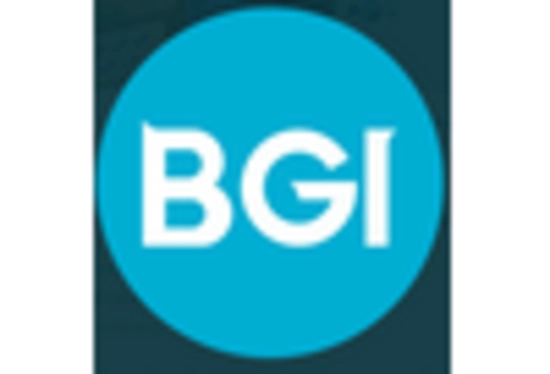
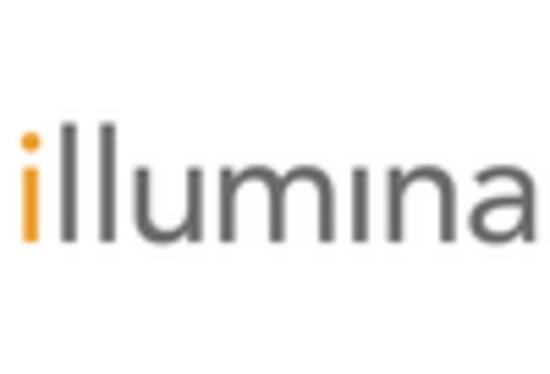
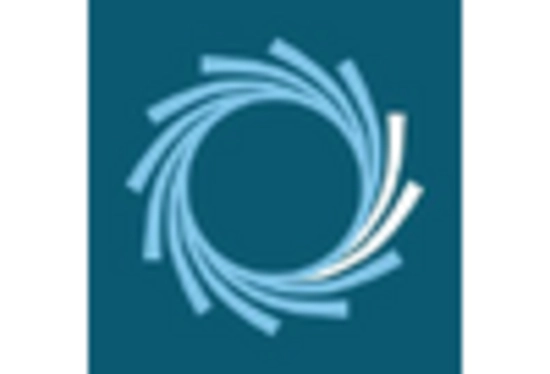
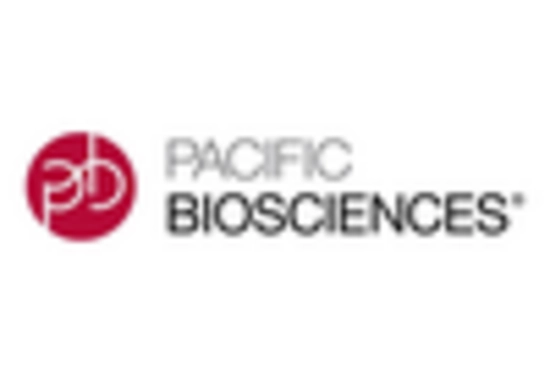
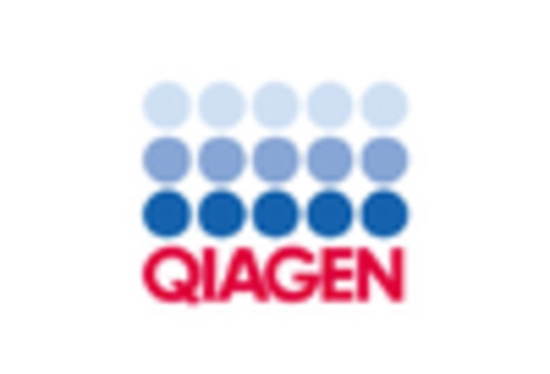










Leave a Comment